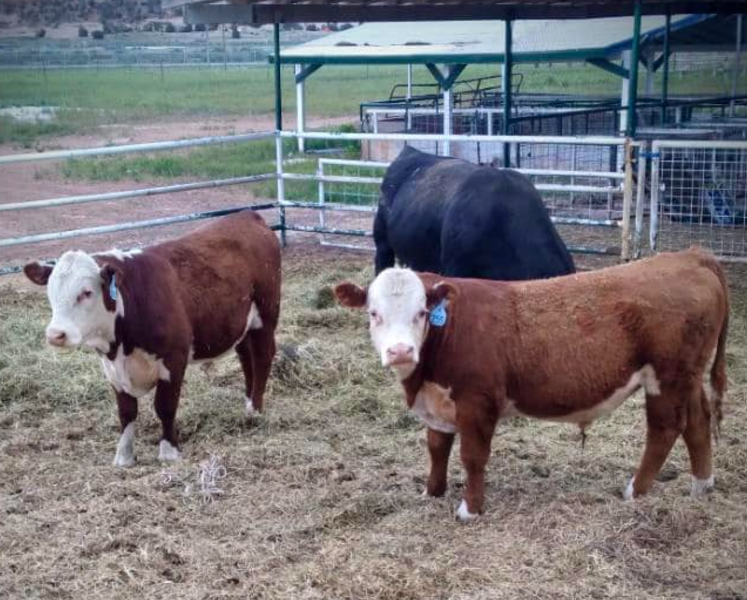
- Details
- By Native News Online Staff
The Navajo Nation Department of Agriculture requests that all Navajo farmers and ranchers enrolled in the Agriculture Infrastructure Fund (AIF) Program disregard any communications from CKP Insurance President Chuck Hemphill.
CKP Insurance and Mr. Hemphill were not renewed for 2025 by the Navajo Division of Natural Resources (DNR) and the Department of Agriculture regarding AIF benefits. Instead, a new insurance agent has been retained to assist the Nation with the Pasture, Rangeland, and Forage (PRF) Insurance Program, offered through the U.S. Department of Agriculture’s Risk Management Agency. This program helps safeguard operations from forage losses caused by drought or insufficient precipitation.
CKP Insurance was not reselected due to violations of the Nation’s procurement process, a lack of transparency, and unsatisfactory customer service. The Navajo Nation is committed to obtaining the best services at the best value to fulfill its fiduciary responsibilities.
Since not being renewed, CKP has engaged in aggressive efforts to pressure the Nation into reinstating its role as the insurance agent. This includes spreading misinformation, withholding essential information owned by the Nation, and restricting Navajo Department of Agriculture (NDOA) staff from accessing the navajoaif.com website.
CKP has also used the AIF website database to disseminate misinformation directly to thousands of farmers and ranchers. We urge all participants to disregard such improper communications.
CKP’s refusal to provide access to the AIF website has jeopardized the timely delivery of benefits under the Livestock Management Incentive and Farm and Garden Incentive programs. The NDOA is collaborating with the Navajo Department of Justice to regain control of the website and secure all related information. Rest assured, all other AIF projects managed by DNR departments remain secure and will proceed as planned.
The Department of Agriculture is actively working on 2025 AIF incentive applications to ensure continued benefits for all Navajo farmers and ranchers.
More Stories Like This
Native News Weekly (August 25, 2024): D.C. BriefsUS Presidents in Their Own Words Concerning American Indians
Indigenous Actor Elaine Miles Reports Detention by Alleged ICE Agents
Happy Thanksgiving from Native News Online
Coming Up on Native Bidaské: Behind the Animation: Joey Clift Talks “Pow” and Native Storytelling
Help us tell the stories that could save Native languages and food traditions
At a critical moment for Indian Country, Native News Online is embarking on our most ambitious reporting project yet: "Cultivating Culture," a three-year investigation into two forces shaping Native community survival—food sovereignty and language revitalization.
The devastating impact of COVID-19 accelerated the loss of Native elders and with them, irreplaceable cultural knowledge. Yet across tribal communities, innovative leaders are fighting back, reclaiming traditional food systems and breathing new life into Native languages. These aren't just cultural preservation efforts—they're powerful pathways to community health, healing, and resilience.
Our dedicated reporting team will spend three years documenting these stories through on-the-ground reporting in 18 tribal communities, producing over 200 in-depth stories, 18 podcast episodes, and multimedia content that amplifies Indigenous voices. We'll show policymakers, funders, and allies how cultural restoration directly impacts physical and mental wellness while celebrating successful models of sovereignty and self-determination.
This isn't corporate media parachuting into Indian Country for a quick story. This is sustained, relationship-based journalism by Native reporters who understand these communities. It's "Warrior Journalism"—fearless reporting that serves the 5.5 million readers who depend on us for news that mainstream media often ignores.
We need your help right now. While we've secured partial funding, we're still $450,000 short of our three-year budget. Our immediate goal is $25,000 this month to keep this critical work moving forward—funding reporter salaries, travel to remote communities, photography, and the deep reporting these stories deserve.
Every dollar directly supports Indigenous journalists telling Indigenous stories. Whether it's $5 or $50, your contribution ensures these vital narratives of resilience, innovation, and hope don't disappear into silence.
 The stakes couldn't be higher. Native languages are being lost at an alarming rate. Food insecurity plagues many tribal communities. But solutions are emerging, and these stories need to be told.
The stakes couldn't be higher. Native languages are being lost at an alarming rate. Food insecurity plagues many tribal communities. But solutions are emerging, and these stories need to be told.
Support independent Native journalism. Fund the stories that matter.
Levi Rickert (Potawatomi), Editor & Publisher

